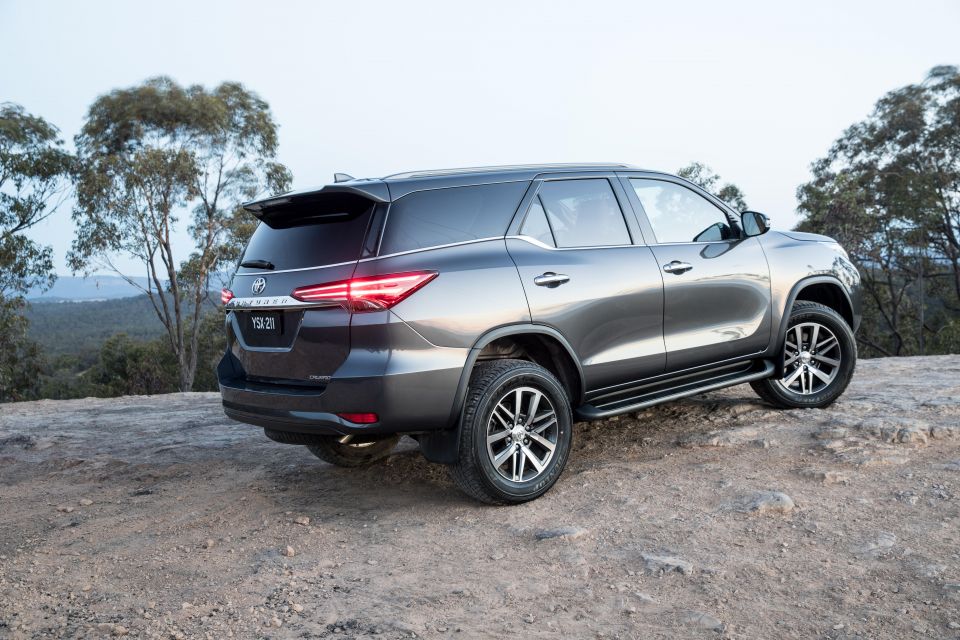

William Stopford
The cars revealed in 2025 we wish would come to Australia
5 Minutes Ago

News Editor
Toyota has been unsuccessful in its appeal against a 2022 Federal Court decision over payments to HiLux, Fortuner, and Prado owners who suffered problems with the diesel particulate filters in their vehicles.
On Monday, the Full Court of the Federal Court of Australia upheld the primary judge’s findings that more than 260,000 Toyotas equipped with defective DPF systems were not of “acceptable quality”.
While the Court hasn’t indicated a total damages amount, the automotive giant could still be liable for an estimated figure of $1 billion to the owners of 264,170 diesel-powered HiLux, Fortuner and LandCruiser Prado models produced between 2015 and 2020.
Lawyers on the class action had previously indicated total damages would be more than $2 billion, and that some drivers could be entitled to more compensation depending on how much they were affected by the loss of their vehicle.
The Court also upheld the finding that Toyota engaged in misleading or deceptive conduct in marketing and selling the vehicles, and that the value of the relevant vehicles at the time of their initial supply has been reduced because of these systems.

It acknowledged Toyota developed an effective fix for the defect in May 2020 and subsequently offered it for free to its owners; the company also extended the warranty on this item to 10 years, with no mileage limit.
The Full Court did, however, find the reduction in value of these vehicles was 10 per cent, before taking into account the availability of the 2020 field fix, and not 17.5 per cent as had been found by the primary judge.
It found there was merit in Toyota’s submission that the utility of its vehicles was unaffected by the defect and its consequences.
It has set aside the primary judge’s aggregate damages award, and the matter is now being sent back to this judge for reassessment of the damages.
Justice Lee handed down the original judgement in the case of Williams v Toyota last April.

“Toyota is reviewing the decision of the Full Court of the Federal Court of Australia,” said a spokesperson for Toyota Australia.
“We remain committed to assisting any customer whose vehicle has experienced the DPF issue and to providing a free-of-charge remedy that has been available since 2020.
“We believe we have implemented customer-focused and technically grounded measures to resolve customer concerns.
“Toyota will consider the judgment carefully before making any further comment.”
DPFs are designed to capture and burn off harmful pollutants. However, many of these vehicles were not regularly running at conditions conducive to burning off said pollutants (long trips at a good clip), and became clogged.
Defective DPFs could cause a number of issues in these vehicles, including excessive white smoke, a reduction in power, and foul-smelling exhaust fumes.
Toyota fitted a DPF burn-off button to its 2.8-litre diesel in 2018, and upgraded the engine substantially in the middle of 2020. But the Court found the former patch was largely less effective than the latter update, which it refers to as a “field fix”.
MORE: Toyota Australia faces payouts as Federal Court finds DPFs faulty MORE: Toyota DPF class action, what’s the latest?
Where expert car reviews meet expert car buying – CarExpert gives you trusted advice, personalised service and real savings on your next new car.
William Stopford is an automotive journalist with a passion for mainstream cars, automotive history and overseas auto markets.


William Stopford
5 Minutes Ago


Josh Nevett
1 Hour Ago


Ben Zachariah
17 Hours Ago


CarExpert.com.au
1 Day Ago


Damion Smy
2 Days Ago


Damion Smy
2 Days Ago